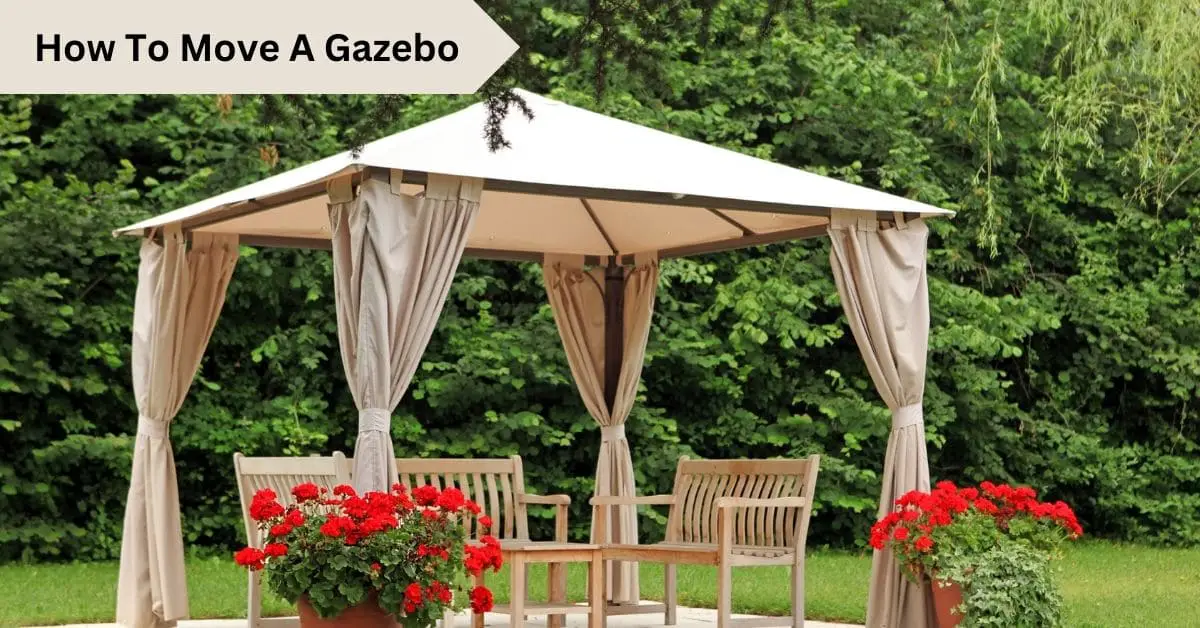Gazebos are a popular outdoor feature in many backyards, providing a shaded and comfortable space for relaxation and entertainment. However, there may come a time when you need to move your gazebo, whether it be due to a change in landscaping or relocating to a new home.
Moving a gazebo can seem daunting, but with proper planning and preparation, it can be done safely and efficiently.
In order to move a gazebo, you’ll need to assess the gazebo, prepare for the move, disassemble the gazebo, move it to its new location, reassemble it, and complete the final steps to ensure everything is in place.
This guide will walk you through each step of the process, providing helpful tips and insights to help you successfully move your gazebo without causing damage or injury.
Whether you’re an experienced DIY enthusiast or a novice, this guide will equip you with the knowledge and skills needed to complete the task at hand.
How to move a gazebo: To move a gazebo, first, enlist help to ensure safety. Disassemble the gazebo carefully, keeping track of parts. Transport components securely to the new location. Reassemble following the original instructions for a sturdy setup.
Why You May Need to Move a Gazebo: Reasons and Considerations
There could be various reasons why someone may need to move a gazebo. For instance, they may have recently purchased a new property and want to take their gazebo. Alternatively, they may want to reposition the gazebo to take advantage of better views or create a more appealing layout in their yard.
In some cases, the gazebo may have been damaged or require repairs, and moving it to a new location may be necessary. Additionally, someone planning a home renovation or landscaping project may need to move the gazebo temporarily to make way for the work. Whatever the reason, moving a gazebo is a complex task that requires proper planning and execution to avoid damage or injury.
Importance of planning and preparation when moving a gazebo
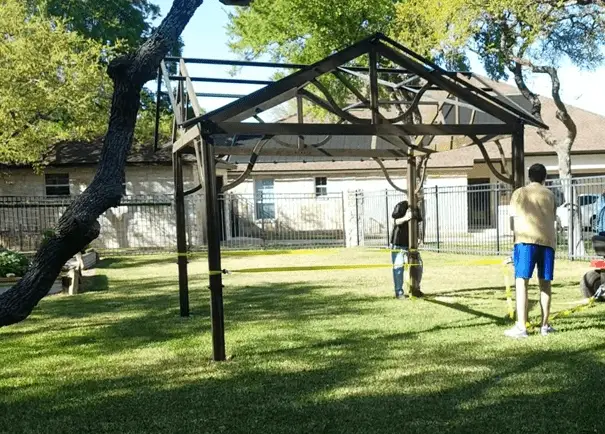
Planning and preparation are crucial when it comes to moving a gazebo. It’s essential to assess the size and weight of the gazebo and the terrain and distance to its new location.
This will help you determine the necessary tools and materials needed for the move.
Proper planning and preparation also involve disassembling the gazebo, labeling and organizing all the parts, and ensuring that all necessary equipment is available. Moving a gazebo can be daunting and dangerous without careful planning.
It’s important to take the time to create a detailed plan and ensure that all necessary preparations are made before starting the move. This will help ensure that the gazebo is moved safely and efficiently and that it arrives at its new location in good condition.
How to Move a Gazebo – A Step-by-Step Guide.
If you’re planning to move a gazebo, whether it’s because you’re relocating or just rearranging your outdoor space, it’s important to take the necessary precautions to ensure a smooth and safe process. Gazebo structures can be quite heavy and awkward to move, so it’s important to plan and enlist the help of a few strong friends or family members.
In this guide, we’ll walk you through the steps to successfully move a gazebo, including preparing the area, disassembling the structure, and transporting it to its new location. With a little bit of planning and careful execution, you’ll be able to move your gazebo easily and without any damage.
1. Assessing the Gazebo for a Safe and Successful Move
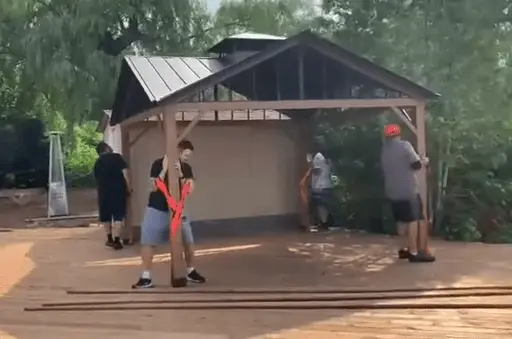
Before moving a gazebo, it’s crucial to assess its size, weight, and construction to determine the best approach for the move. Consider the gazebo’s foundation and the materials used to construct it.
For instance, a gazebo with a concrete foundation will require different tools and methods than one with a wooden foundation.
Assessing the gazebo’s size and weight will help determine the necessary equipment needed to move it safely, such as heavy-duty straps or a dolly. It’s also important to assess the terrain and distance to the gazebo’s new location.
This will help you determine the best route for transporting the gazebo and any potential obstacles that may need to be addressed.
By carefully assessing the gazebo, you can develop a plan that considers all the necessary factors, ensuring a safe and successful move.
2. Determining the Size and Weight of a Gazebo: Critical Steps for Planning its Move
Determining the size and weight of the gazebo is a critical step when planning to move it. The size of the gazebo can affect the number of people needed for the job, the size of the vehicle required for transportation, and the tools necessary for disassembly.
Additionally, the weight of the gazebo can significantly impact the equipment needed to move it safely. Heavy-duty straps or a dolly may be necessary for larger, heavier gazebos, while smaller ones may require only basic tools for disassembly and transport.
Accurately determining the size and weight of the gazebo will help ensure that the right equipment and tools are available for a successful move.
3. Inspecting for Damage and Issues Before Moving a Gazebo
Before using any equipment or attempting to move a gazebo, it’s essential to check for any damage or potential issues. Look for signs of wear and tear, such as cracks, loose bolts or screws, and broken pieces.
Ensure that the roof is securely attached and that the structure is stable. If the gazebo has been exposed to harsh weather conditions or has not been used for an extended period, there may be mold or rot present that could compromise the integrity of the gazebo.
Identifying and addressing any damage or potential issues before moving the gazebo can help prevent further damage or accidents during the process.
4. Essential Steps for Preparing a Gazebo Move
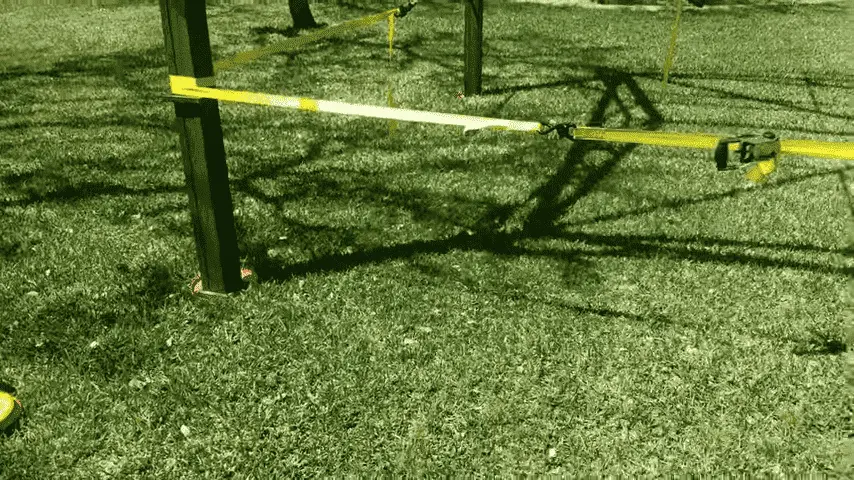
Preparing for a gazebo move involves several essential steps. First, ensure you have the necessary tools and equipment for the job, such as a dolly, heavy-duty straps, and basic hand tools.
It’s also essential to have enough people to assist with the move, depending on the size and weight of the gazebo. If you’re moving a larger gazebo, consider renting a truck or trailer to accommodate its size.
Additionally, it’s crucial to plan the route for transporting the gazebo and ensure no obstacles or hazards along the way. Clear the area around the gazebo and ensure ample space to maneuver the equipment during the move.
By adequately preparing for the move, you can help ensure a successful and safe relocation of your gazebo.
5. Essential Tools and Equipment
Gathering the necessary equipment and tools is an important step when moving a gazebo. The specific tools and equipment needed will depend on the size and weight of the gazebo, as well as the terrain and obstacles that may be encountered during the move.
Some essential tools to have on hand include screwdrivers, wrenches, hammers, and pliers. Additionally, heavy-duty straps, a dolly, and a trailer or truck may be required to move larger and heavier gazebos. Before the move, list all the necessary equipment and tools and ensure that they are in good condition and working properly.
By gathering the necessary equipment and tools, you can help ensure that the gazebo move is completed safely and efficiently.
6. Removing Attached Items Before Moving a Gazebo
Before moving a gazebo, removing any attached items, such as screens or curtains, is important. These items can add weight to the gazebo and make moving more difficult. Additionally, they can become damaged or tangled during the move, which can be costly to repair or replace.
To remove screens or curtains, carefully detach them from the gazebo frame, keeping any screws or fasteners in a safe place for reattachment later. If the screens or curtains are in good condition, consider storing them separately during the move to prevent damage.
Removing any attached items before the move can help ensure that the gazebo is easier to transport and that all components arrive at the new location in good condition.
7. Clearing a Path for the Gazebo Move
Clearing a path for the gazebo is an important step to ensure a successful move. Before moving the gazebo, assess the terrain and identify any obstacles or hazards that may be in the way, such as rocks, tree branches, or uneven ground.
Clearing a path will prevent the gazebo from getting stuck or damaged during the move. If the gazebo needs to be moved over grass, mowing the lawn to make the surface as even as possible is important. Similarly, if the gazebo needs to be moved over a driveway or other hard surface, be sure to sweep and clear any debris or loose gravel.
By clearing a path for the gazebo before the move, you can help ensure that the move is safer and smoother.
8. Disassembling a Gazebo
Disassembling a gazebo can be challenging, requiring patience and attention to detail. The first step is to remove any detachable components, such as the roof, sidewalls, and supporting poles. Labeling each piece and keeping the hardware in a secure location is important to avoid losing parts during disassembly.
The next step is to disassemble the remaining frame, starting with the topmost section and working downward. Avoid stripping or damaging the hardware when removing bolts and screws. Once all the pieces are disassembled,
it’s essential to pack and store them properly to ensure they remain in good condition for future use. Disassembling a gazebo can be time-consuming, but with the right approach, it can be done efficiently and effectively.
9. How to Carefully Remove the Roof
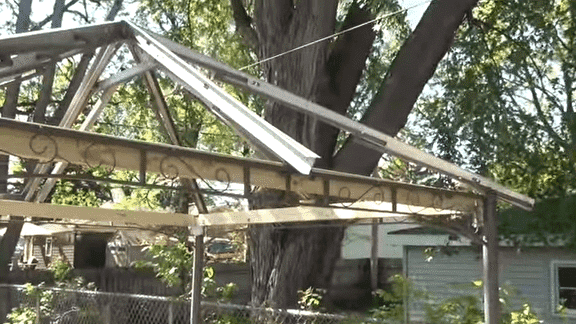
When disassembling a structure such as a gazebo, it is crucial to remove the roof carefully.
Depending on the design of the gazebo, the roof may be one large piece or several smaller sections.
Before removing any fasteners or supports, inspect the roof for any signs of damage or weakness that may cause it to collapse during removal.
Once you have ensured the roof is secure, remove any screws, nails, or bolts securing it to the supporting structure.
Having an extra set of hands to hold the roof steady as it is lifted off the supporting structure may be helpful. Take care to avoid dragging or scraping the roof as it is removed, which can cause damage.
By taking your time and carefully removing the roof, you can ensure a successful disassembly and protect the structure for future use.
10. Disassembling the Walls and Supports of a Gazebo
Disassembling the walls and supports of a gazebo is a critical step in the disassembly process. Begin by removing any fasteners or hardware that connect the walls to the frame, such as screws or bolts.
It may be helpful to have an extra set of hands to steady the walls as they are removed to prevent any damage to the structure or injury to those involved. Once the walls are detached, disassemble the supporting poles or framework in the same manner, keeping all hardware and fasteners organized and labeled.
Depending on the type of gazebo, the supporting poles may require additional tools such as pliers or wrenches for removal. When disassembling the walls and supports, it is essential to take your time and work systematically to ensure that all pieces are removed and stored properly for future use.
11. Labeling and Organizing Gazebo Parts for Easy Reassembly
Labeling and organizing all the pieces of the gazebo during disassembly is essential for easy reassembly in the future. Use a permanent marker or labels to mark each piece and take note of its location and orientation.
This can be done by using small bags or containers to keep all the hardware for each section together. Taking photos during the disassembly process can also help with reassembly by providing a visual reference. Store all labeled pieces in a secure location to prevent damage or loss.
Labeling and organizing all the pieces can save time and avoid confusion during reassembly, ensuring that your gazebo is restored to its original form quickly and easily.
12. Successfully Moving a Gazebo to a New Location
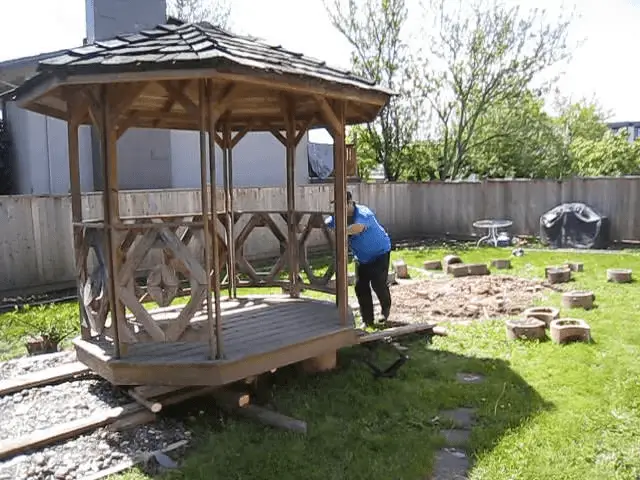
Moving a gazebo can be challenging and requires careful planning and execution. Before moving the gazebo, ensure all components are fully disassembled, labeled, and organized.
Assess the new location to determine the best route for transporting the gazebo components, considering any obstacles such as stairs, narrow doorways, or low-hanging branches.
It is also important to have the necessary equipment and manpower to move the gazebo safely, which may include a flatbed truck, dolly, and lifting straps.
Once at the new location, reassemble the gazebo in reverse order, starting with the supporting frame and working upward to the roof. It is important to take time and ensure that all components are securely fastened and aligned.
By carefully planning and executing the move, you can successfully relocate your gazebo to a new location without any damage or mishaps.
13. Equipment and Safety Precautions
When moving a gazebo, it is essential to have the appropriate equipment to ensure a safe and successful transfer. Depending on the size and weight of the gazebo, a dolly or forklift may be necessary to move the components.
A dolly is a helpful tool for moving smaller pieces, such as supporting poles and sidewalls, while a forklift can be used to move larger sections, such as the roof or main frame. It is important to ensure that the equipment is in good working order and that all safety precautions are followed when operating it.
Additionally, it may be helpful to have additional manpower to assist with moving the gazebo components and ensure that they are lifted and transported safely. By using the appropriate equipment and following safety protocols, you can move your gazebo without any damage or injury.
14. The Importance of Having a Team When Moving a Gazebo
When moving a gazebo, having a team of people to help with the process can be incredibly helpful. Depending on the size and weight of the gazebo, it may require several individuals to lift and transport each component safely.
Having a team of people can not only make the job easier, but it can also help to prevent injuries and damage to the gazebo. When selecting your team, it is important to choose individuals who are physically capable of handling the weight of the gazebo components and who can follow safety instructions.
By working together and communicating effectively, you can ensure a smooth and successful move for your gazebo.
15. Importance of Caution and Slow Movement.
When moving a gazebo, it is crucial to approach the process cautiously and move slowly to avoid damage. Rushing the process or attempting to move too quickly can result in components becoming damaged or broken.
It is important to take the time to plan the move and ensure that all individuals involved in the process know the plan and their role in it. Additionally, when lifting and transporting the gazebo components, it is important to use slow and deliberate movements, ensuring that all pieces are supported and balanced properly.
Moving slowly and carefully, you can help ensure that your gazebo is transported safely and without any damage.
16. Reassembling a Gazebo After Moving

Once the gazebo has been successfully transported to its new location, the next step is to reassemble it.
This process can be time-consuming and requires careful attention to detail to ensure all components are properly aligned and secured.
Begin by laying out all components and referring to the gazebo’s assembly instructions to determine each piece’s correct order and positioning.
Having a few individuals assist with this process may be helpful, especially when lifting and securing heavier pieces.
As each component is assembled, take the time to double-check that it is secure and level before moving on to the next piece.
17. Importance of Labeled Parts When Reassembling a Gazebo.
When reassembling a gazebo after it has been transported to a new location, it is essential to refer to the labeled and organized pieces. This will make the reassembly process much easier and more efficient.
Before you begin, take the time to lay out all of the components and inspect each piece for any damage that may have occurred during transportation. Once you have confirmed that all components are in good condition, refer to the gazebo’s assembly instructions to determine each piece’s correct order and positioning.
By referring to the labeled and organized pieces, you can save time and minimize the risk of mistakes during the reassembly process, ensuring that your gazebo is sturdy and stable for years to come.
19. Proper Tools and Instructions for Gazebo Reassembly
When reassembling a gazebo, it is important to use appropriate tools and follow the manufacturer’s instructions. This will ensure that the gazebo is assembled correctly and that all components are secure.
Before beginning the reassembly process, ensure you have all the necessary tools and equipment, including hammers, wrenches, and screwdrivers. Using the wrong tools or not following the manufacturer’s instructions can lead to mistakes and potentially dangerous situations.
Take the time to carefully read and understand the assembly instructions, and don’t hesitate to ask for help if needed. Using appropriate tools and following the manufacturer’s instructions ensures your gazebo is sturdy, safe, and functional for years to come.
20. Reattaching Screens and Curtains After Gazebo Reassembly

After reassembling a gazebo, it is important to reattach any screens or curtains that were previously in place.
This not only adds to the aesthetic appeal of the gazebo but also serves as a functional feature, providing privacy and protection from insects.
When reattaching screens or curtains, take care to ensure that they are properly aligned and securely fastened. Depending on the type of screen or curtain, this may involve using hooks, clips, or other fasteners.
Once all screens and curtains have been reattached, take the time to inspect them for any damage that may have occurred during transportation or reassembly.
By reattaching screens and curtains properly, you can enhance the functionality and visual appeal of your gazebo while also ensuring that it remains a comfortable and enjoyable outdoor living space.
21. Final Steps After Gazebo Reassembly and Screen/Curtain Reattachment
After reassembling a gazebo and reattaching screens or curtains, there are a few final steps to take before enjoying your outdoor living space. First, thoroughly clean the gazebo to remove any dirt or debris that may have accumulated during transportation and assembly.
This can be done using a mild detergent, water, and a soft brush or cloth. Next, consider adding any finishing touches such as lighting fixtures, plants, or outdoor furniture. Finally, take a step back and admire your handiwork!
By taking the time to reassemble your gazebo and add the necessary finishing touches properly, you can create a beautiful and functional outdoor living space that you can enjoy for years to come.
22. Cleaning the Gazebo After Reassembly
Cleaning the gazebo is an important step after reassembling it. Dirt, debris, and other materials can accumulate during the transportation and assembly process, detracting from the gazebo’s appearance and potentially causing damage over time.
To clean the gazebo, first, remove any loose debris, such as leaves, sticks, or cobwebs. Then, mix a mild detergent with water and use a soft brush or cloth to scrub the surfaces of the gazebo gently. Rinse the gazebo thoroughly with water and allow it to air dry.
By cleaning the gazebo after reassembly, you can maintain its appearance and ensure it remains a comfortable and enjoyable outdoor living space.
23. Releveling and Securing the Gazebo in its New Location

After reassembling a gazebo and cleaning it, releveling it and securing it in its new location is important.
This is crucial for the gazebo’s stability and safety, especially if it will be subjected to harsh weather conditions such as strong winds or heavy rain.
To relevel the gazebo, use a level to ensure all corners are at the same height.
If the gazebo is not level, adjust the footings or foundation until it is. Next, secure the gazebo in place by attaching it to the ground using stakes or other suitable fasteners. This will help prevent the gazebo from being knocked over or blown away during high winds.
By releveling and securing the gazebo in its new location, you can ensure it remains a safe and stable outdoor living space for you and your family to enjoy.
24. Enjoying Your Gazebo in Its New Location
After completing all the necessary steps to reassemble and secure your gazebo in its new location, it’s time to sit back and enjoy the fruits of your labor. Relax in your new outdoor living space and enjoy the scenery around you. Invite friends and family for a barbecue or a game night under the pavilion’s shelter.
Consider adding some finishing touches, such as outdoor lighting, comfortable furniture, and potted plants to make the space even more inviting. With proper care and maintenance, your gazebo will provide a comfortable and enjoyable outdoor living space for many years. So, sit back, relax, and enjoy your new gazebo!
FAQs
Q:1 Do I need professional help to assemble my gazebo?
It depends on your level of expertise and the complexity of the pavilion. If you have experience with DIY projects and feel confident in your abilities, you may be able to assemble the gazebo on your own. However, if you are unsure about any part of the process, it is always a good idea to seek professional help to ensure the gazebo is assembled safely and correctly.
Q:2 How long does it take to assemble a gazebo?
The time it takes to assemble a gazebo can vary widely depending on the size and complexity of the structure, as well as the skill level of the person assembling it. Some gazebos may only take a few hours to assemble, while others may take several days. Setting aside enough time to complete the assembly properly and safely is important.
Q:3 What tools do I need to assemble a gazebo?
The tools required to assemble a gazebo can vary depending on the type and model of the gazebo. However, most gazebos will require basic hand tools such as a hammer, screwdrivers, and wrenches. It is important to read the manufacturer’s instructions carefully to determine the exact tools required for your specific gazebo.
Q:4 How do I know if my gazebo is level?
To determine if your gazebo is level, use a carpenter’s level to check all corners of the structure. If the level indicates any corner is higher or lower than the others, you must adjust the footing or foundation until the gazebo is level.
Q:5 Can I move my gazebo once it is assembled?
Moving a gazebo once assembled is possible, but it can be difficult and potentially dangerous. Before attempting to move the gazebo, follow the manufacturer’s instructions carefully and enlist the help of several people to ensure that the structure remains stable and does not tip over.
Conclusion
In conclusion, reassembling a gazebo is a task that requires careful planning and execution. By using appropriate tools, following manufacturer instructions, and taking the necessary steps to reattach screens or curtains, clean the gazebo, and relevel and secure it in its new location, you can ensure your gazebo is sturdy, safe, and functional.
Adding finishing touches such as outdoor lighting, comfortable furniture, and potted plants can enhance the beauty and functionality of your outdoor living space. So, take your time and follow each step carefully to create a comfortable and enjoyable outdoor living space that you and your family can enjoy for years to come.
We hope you will know how to move a gazebo by reading this comprehensive guide. If you have any questions, feel free to drop a comment below!

